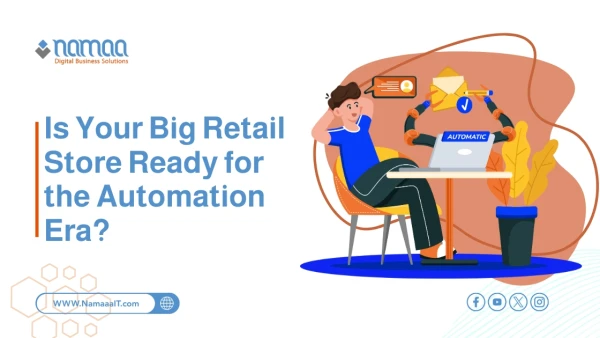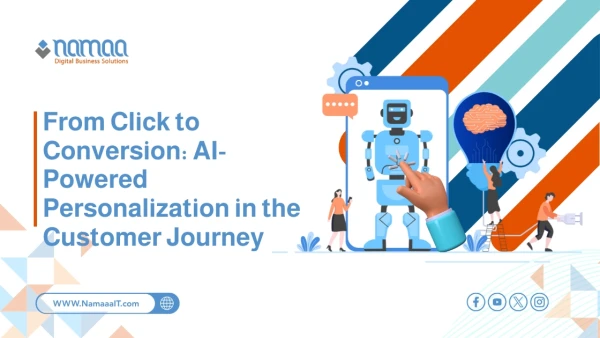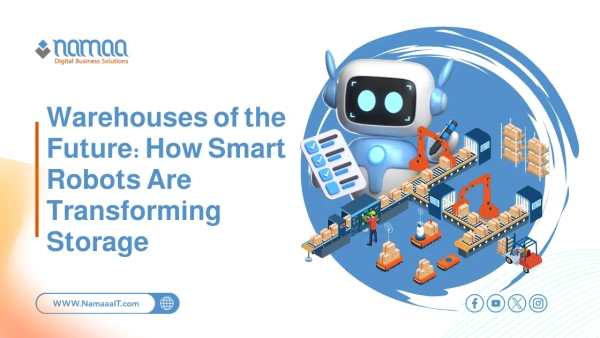The face of shopping has dramatically changed as AI becomes central to the 2025 retail landscape. Stores are no longer just about offering products—they now rely on advanced technologies to analyze consumer behavior and predict needs with unmatched precision. This shift has provided shoppers with more personalized and seamless purchasing options while elevating the interaction between customers and brands. Shopping has become a smart, adaptive experience that aligns with the demands of the digital age and rapidly advancing technology.
How Has AI Transformed Shopping in 2025?
By 2025, shopping has undergone a major transformation thanks to artificial intelligence. The experience has become smarter, smoother, and highly personalized.
Gone are the days of generic experiences. Today’s shoppers receive recommendations and deals tailored to their real-time needs and behaviors. This has led to increased satisfaction, stronger brand loyalty, and improved efficiency across e-commerce operations—while reducing human error throughout the supply chain.
Top AI Applications in E-Commerce Stores
Online retailers in 2025 leverage a wide range of AI-powered solutions that revolutionize both customer experience and management efficiency. Key applications include:
- Smart Recommendation Engines: Analyze behavior to suggest relevant products.
- AI-Powered Chatbots: Provide real-time customer support.
- Sentiment and Big Data Analysis: Deep understanding of customer preferences.
- Dynamic Pricing: Real-time price adjustments based on demand and competition.
- Inventory Automation: Forecast demand and reduce waste.
- Fraud Detection: Enhance customer data protection and transaction security.
Instant Offer Personalization with AI
AI enables e-commerce stores to instantly personalize offers for each shopper, boosting conversion rates and customer satisfaction. Here’s a summary of the benefits:
| Advantage | Impact |
|---|---|
| Higher Conversion Rates | Targeted recommendations increase the chance of purchase by up to 30% |
| Improved Customer Experience | Offers and products match individual interests |
| Time & Effort Savings | Minimizes manual searching for deals |
| Greater Brand Loyalty | A standout experience increases customer satisfaction and retention |
How Smart Recommendations Drive Sales
Smart recommendation systems significantly boost e-commerce sales by:
- Analyzing browsing and purchase behavior to suggest high-relevance products.
- Supporting cross-selling and upselling through complementary or premium suggestions.
- Personalizing marketing messages based on each user’s preferences.
- Enhancing engagement and increasing the average order value through better user experience.
AI's Role in Reducing Logistics Errors
AI has dramatically reduced logistics errors through automation and predictive analytics. Key areas of improvement include:
- Demand Forecasting: Avoids stockouts and overstocking.
- Real-Time Shipment Tracking: Accurate data on product locations.
- Automated Inventory Management: Reduces human error and increases accuracy.
- Risk Analysis & Early Intervention: Predicts and mitigates issues proactively.
- Operational Efficiency: Cuts costs and speeds up deliveries.
Together, these advancements make AI an indispensable tool for any e-commerce business striving to excel in a highly competitive market.
AR/VR Powered by AI in Shopping
In 2025, augmented reality (AR) and virtual reality (VR) supported by AI are integral to the modern shopping experience. These technologies allow users to interact with products realistically—without visiting a physical store. Key applications include:
- Virtual Product Trials: Try on clothes or preview furniture at home.
- Immersive Brand Experiences: 3D ads or virtual showrooms.
- Informed Decision-Making: Simulate product usage in real settings.
- AI-Based Personalization: Adapts the virtual experience to user preferences.
These innovations increase engagement, reduce return rates, and offer a distinct competitive edge in the digital marketplace.
AI and Mobile Shopping App Innovation
AI is central to the development of smarter, more personalized mobile shopping apps in 2025. Key features include:
- Smart Product Suggestions based on user behavior.
- AI Chatbots offering fast and precise customer support.
- Natural Language Search for improved in-app product discovery.
- Enhanced Security through encryption and two-factor authentication.
- AR Integration to visualize products before purchasing.
These innovations have improved customer satisfaction, boosted conversions, and made shopping accessible anytime, anywhere.
Traditional vs. Smart Shopping in 2025
Here’s a quick comparison between traditional and AI-powered smart shopping experiences in 2025:
| Criteria | Traditional Shopping | Smart Shopping (2025) |
|---|---|---|
| Convenience & Flexibility | In-store visits required | Buy anytime, anywhere |
| Offer Personalization | Generic offers | Tailored suggestions and deals |
| Product Experience | Limited in-store try-ons | Virtual trials via AR/VR |
| Customer Support | In-store staff | AI chatbots and instant assistance |
| Product Range | Limited to store inventory | Unlimited options with smart filtering |
| Checkout Speed | Slow (lines and waiting) | Fast and seamless via smart apps |
AI and immersive tech have revolutionized shopping—making it more convenient, customized, and innovative.
AI and Inclusive Shopping for People with Disabilities
In 2025, AI has dramatically improved shopping accessibility for people with disabilities. Solutions include:
- Smart Screen Readers: Advanced tools like TalkBack with AI-generated image descriptions and voice interaction.
- Expressive Captions: Allow deaf or hard-of-hearing users to interpret non-verbal cues during live shopping events.
- Enhanced Browsers: OCR and text-scaling features help users navigate websites and read product details easily.
- Customizable Interfaces: AI tailors layouts and accessibility tools to fit various disability needs.
These innovations provide a more independent, dignified shopping experience and bridge the digital gap.
AI Applications in Logistics Efficiency (Summary Table)
| Technology | Practical Application | Main Impact |
|---|---|---|
| Machine Learning | Demand forecasting, supplier management | Reduces stockouts, improves supply sourcing |
| Computer Vision & IoT | Shipment tracking, warehouse scanning | Minimizes loss, delivers real-time insights |
| Digital Twins | Real-time logistics simulations | Faster crisis response, optimized network design |
| Smart Control Towers | End-to-end supply chain monitoring | Reduces disruptions, human error |
| Generative AI | Route planning, automated reporting | Improves efficiency, reduces costs |
Companies adopting these AI solutions saw forecast error reductions of up to 18% and on-time delivery gains of 15%, leading to substantial cost savings and higher customer satisfaction.
FAQs: AI and the Shopping Experience in 2025
1. How does AI protect customer data in e-commerce?
AI uses advanced encryption and behavior analysis to detect fraud attempts. It monitors for suspicious activity and alerts admins instantly, strengthening customer data protection.
2. Has AI reduced operational costs for e-commerce stores?
Yes. Automating tasks like inventory management and customer service has reduced staffing needs and human error—leading to lower costs and increased profitability.
3. How does AI support environmental sustainability in retail?
AI optimizes supply chains, minimizes product waste, and suggests eco-conscious purchases. It also helps cut energy/resource use via efficient storage and delivery planning.
4. How does AI enhance shopping on social media?
AI analyzes user preferences to deliver targeted ads and recommendations. Integrated chatbots also handle purchases and customer queries in real time.
5. What challenges remain for AI in shopping?
Challenges include privacy protection, fair and transparent algorithms, reducing bias, and building robust infrastructure for seamless system integration.
Summary:
✅ AI-powered stores in 2025 saw up to 30% higher conversion rates due to real-time offer personalization and smart recommendations.
✅ Supply chain forecast errors fell by 18%, and on-time deliveries improved by 15% after AI logistics adoption.
✅ AI-enhanced AR/VR shopping significantly reduced product return rates through virtual product trials.
✅ Smart chatbots cut customer response time by 60%, boosting satisfaction and loyalty.
✅ AI-driven automation reduced operating costs by 20–25% through improved inventory and data management.





.webp)



